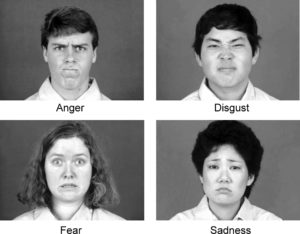 October is Domestic Violence Awareness Month and while this topic may be an uncomfortable one, understanding domestic violence and how to detect and prevent it can save lives.
October is Domestic Violence Awareness Month and while this topic may be an uncomfortable one, understanding domestic violence and how to detect and prevent it can save lives.
One way of achieving this is to better train law enforcement to identify signs of aggression and violence. This involves significant people reading and emotional detection skills, as we seek to learn what microexpressions betray that feeling of aggression. As Humintell’s Drs. David Matsumoto and Hyisung Hwang found, aggression is predicted by fleeting and unconscious but also very telling facial expressions.
This research, published in the Journal of Threat Assessment and Management in 2014 relied on a series of four studies which consistently found that observers with training in law enforcement tended to reliably identify the facial signs that predict aggression and violence.
However, those without much experience witnessing or experiencing physical assaults did not tend to do well in selecting the expression that predicted violence. Drs. Matsumoto and Hwang attributed this to the reliance on stereotypical presentations of aggressive expressions, which tended to be incorrect.
Their studies also help map out exactly what the expression in question looks like, but this also grapples with the differences between types of aggression: premeditated and spontaneous.
For instance, the face of someone considering a premeditated assault is characterized by lowered brows, raised eyelids, and the tightening of lips. This appears as though they are seeking to control their expression of anger, evincing determination and concentration.
Such an expression must be contrasted with the “loss of control face,” which is seen in those who are about to attack after having just lost their temper. This expression also shows lowered brows and raised eyelids, but now the eyelids are even more starkly raised, creating a bulging, staring quality. Again, the lips are tightened, but the lower lip is not raised. The raising of the lower lip is often associated with efforts to control one’s emotions which is not present in this form of aggression.
So, how is this information helpful? And how does it relate to Domestic Violence Awareness?
Well, there are a couple lessons to draw from here. First, we have the potential to detect when someone is going to commit acts of aggression. Learning how to do this is important both for detecting when someone will attack us but also if someone is struggling to refrain from or is planning to attack others.
Second, without training, many of us are very bad at realizing this potential. While law enforcement officers were shown to be quite good at it across cultures, laypeople stand to gain a lot from a formal training procedure.
If nothing else, we hope that focusing on this potential can also help us become more aware of signs of aggression around us, for our benefit and for that of others.
*
For the month of October, save 30% on any deadly intent training course with code DVAM2019 when checking out!
 When understanding how other cultures express emotions, it is almost as important to reflect on our own cultural norms as it is to recognize differing ones.
When understanding how other cultures express emotions, it is almost as important to reflect on our own cultural norms as it is to recognize differing ones. We spend a fair amount of this blog discussing the role of universal emotional expressions, but not everyone agrees.
We spend a fair amount of this blog discussing the role of universal emotional expressions, but not everyone agrees.